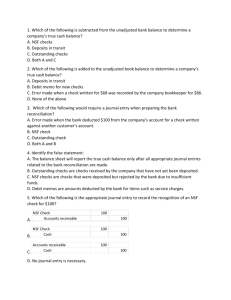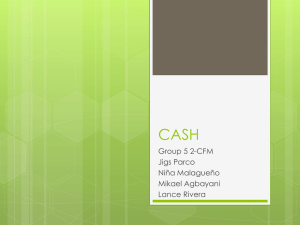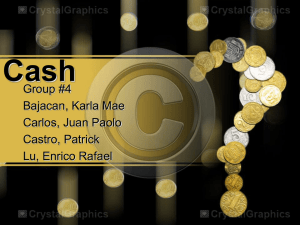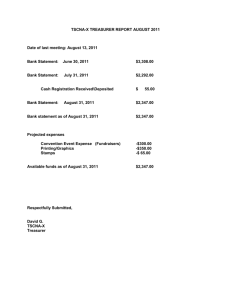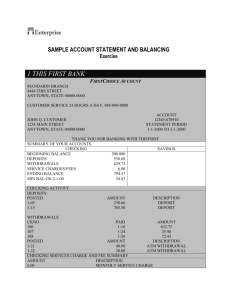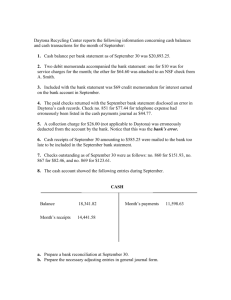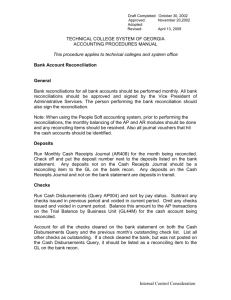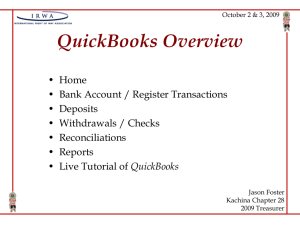Bank Reconciliation Instructions
advertisement
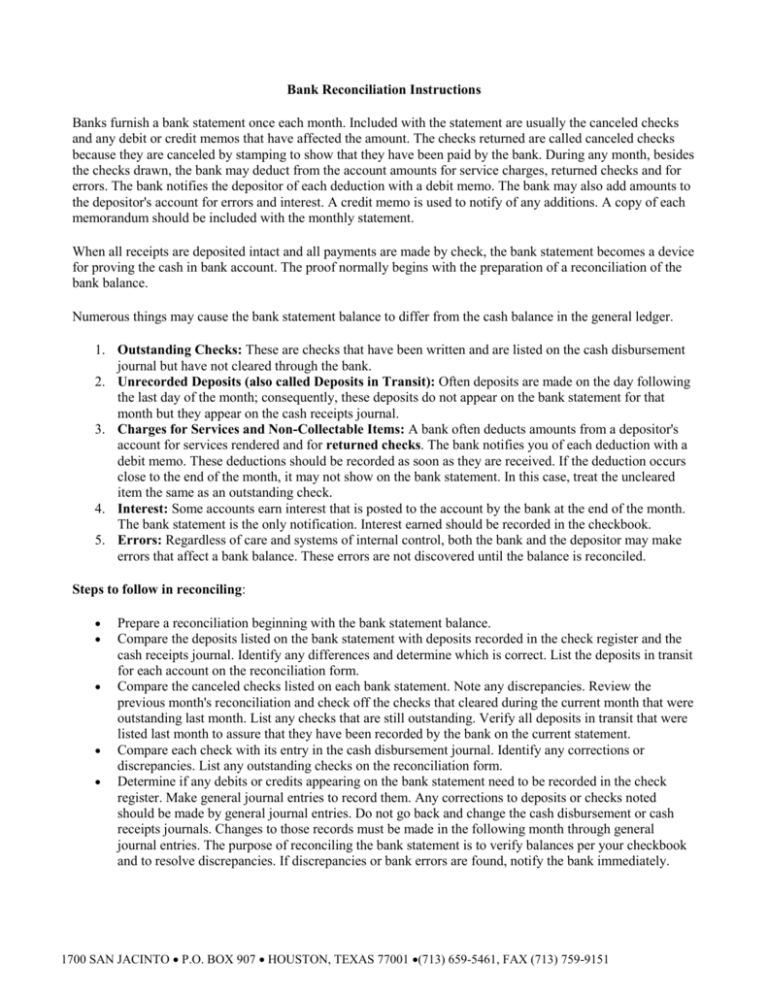
Bank Reconciliation Instructions Banks furnish a bank statement once each month. Included with the statement are usually the canceled checks and any debit or credit memos that have affected the amount. The checks returned are called canceled checks because they are canceled by stamping to show that they have been paid by the bank. During any month, besides the checks drawn, the bank may deduct from the account amounts for service charges, returned checks and for errors. The bank notifies the depositor of each deduction with a debit memo. The bank may also add amounts to the depositor's account for errors and interest. A credit memo is used to notify of any additions. A copy of each memorandum should be included with the monthly statement. When all receipts are deposited intact and all payments are made by check, the bank statement becomes a device for proving the cash in bank account. The proof normally begins with the preparation of a reconciliation of the bank balance. Numerous things may cause the bank statement balance to differ from the cash balance in the general ledger. 1. Outstanding Checks: These are checks that have been written and are listed on the cash disbursement journal but have not cleared through the bank. 2. Unrecorded Deposits (also called Deposits in Transit): Often deposits are made on the day following the last day of the month; consequently, these deposits do not appear on the bank statement for that month but they appear on the cash receipts journal. 3. Charges for Services and Non-Collectable Items: A bank often deducts amounts from a depositor's account for services rendered and for returned checks. The bank notifies you of each deduction with a debit memo. These deductions should be recorded as soon as they are received. If the deduction occurs close to the end of the month, it may not show on the bank statement. In this case, treat the uncleared item the same as an outstanding check. 4. Interest: Some accounts earn interest that is posted to the account by the bank at the end of the month. The bank statement is the only notification. Interest earned should be recorded in the checkbook. 5. Errors: Regardless of care and systems of internal control, both the bank and the depositor may make errors that affect a bank balance. These errors are not discovered until the balance is reconciled. Steps to follow in reconciling: Prepare a reconciliation beginning with the bank statement balance. Compare the deposits listed on the bank statement with deposits recorded in the check register and the cash receipts journal. Identify any differences and determine which is correct. List the deposits in transit for each account on the reconciliation form. Compare the canceled checks listed on each bank statement. Note any discrepancies. Review the previous month's reconciliation and check off the checks that cleared during the current month that were outstanding last month. List any checks that are still outstanding. Verify all deposits in transit that were listed last month to assure that they have been recorded by the bank on the current statement. Compare each check with its entry in the cash disbursement journal. Identify any corrections or discrepancies. List any outstanding checks on the reconciliation form. Determine if any debits or credits appearing on the bank statement need to be recorded in the check register. Make general journal entries to record them. Any corrections to deposits or checks noted should be made by general journal entries. Do not go back and change the cash disbursement or cash receipts journals. Changes to those records must be made in the following month through general journal entries. The purpose of reconciling the bank statement is to verify balances per your checkbook and to resolve discrepancies. If discrepancies or bank errors are found, notify the bank immediately. 1700 SAN JACINTO P.O. BOX 907 HOUSTON, TEXAS 77001 (713) 659-5461, FAX (713) 759-9151

